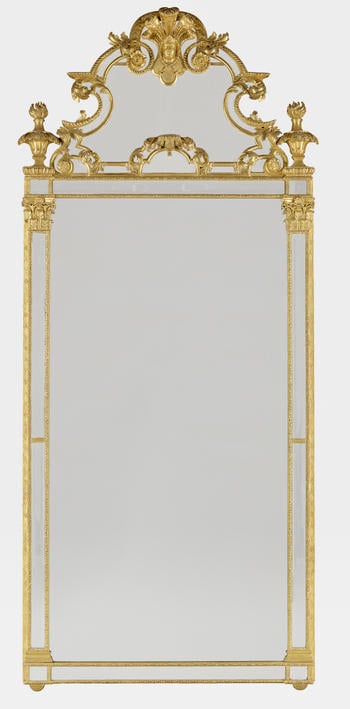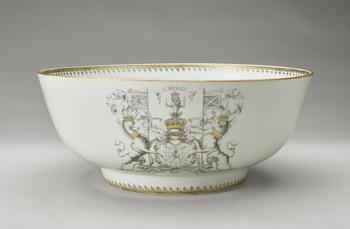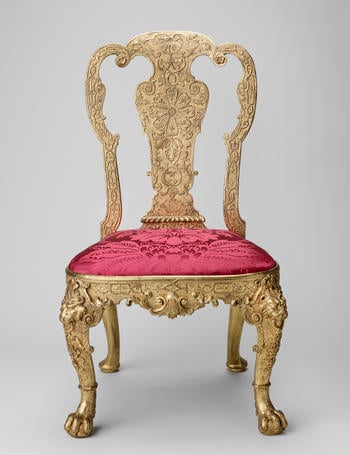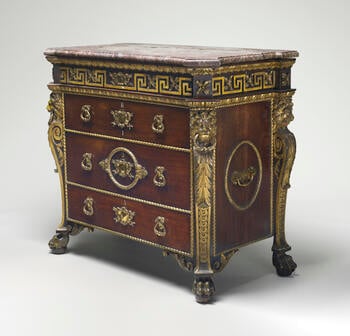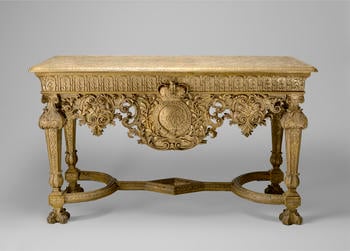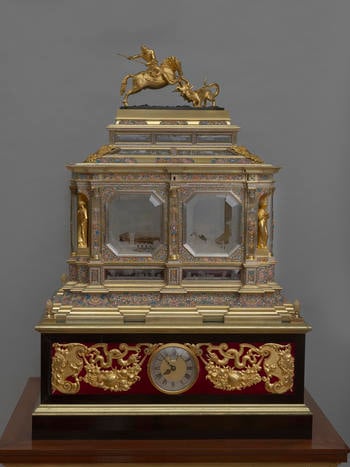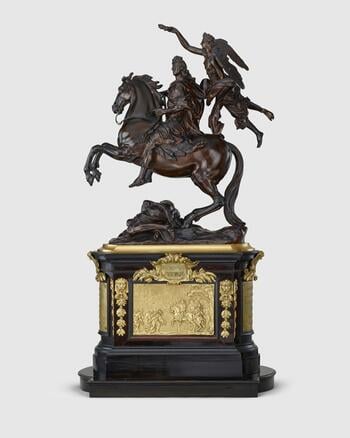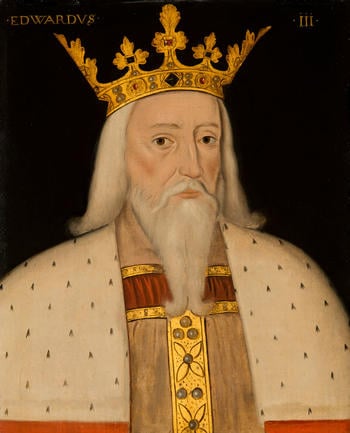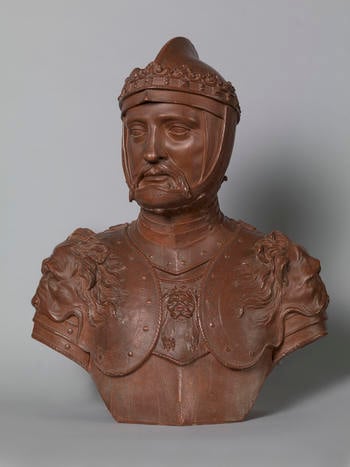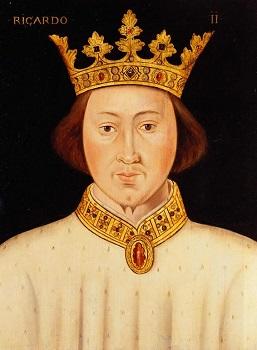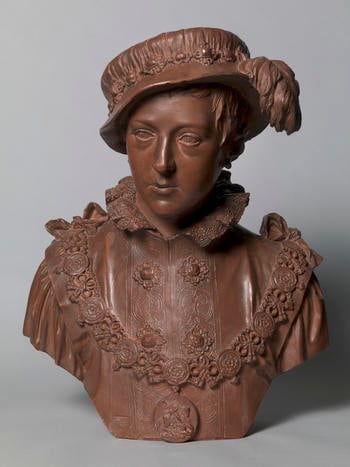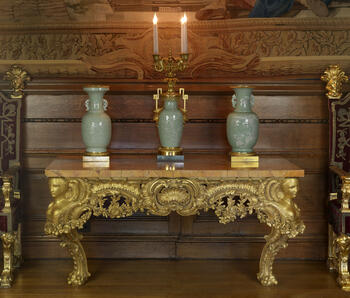
Furnishing the Palaces

Side table ©
In the early years of the new dynasty, new furniture made for the palaces followed late Baroque French fashions inspired by furniture made for Louis XIV’s Château de Versailles. These patterns provided the source for many European princes throughout the late seventeenth century. Typical of a Baroque princely apartment (until about 1720), was the classic arrangement of mirror, table and pair of candle-stands, often all made in gilded wood, and placed in a long line against the window wall. In the 1720s, a rival style emerged making use of Italian prototypes, both contemporary and ancient, which harmonised with the interior architecture and painting collecting.
John Gumley (1672-1729)
Mirror
Jingdezhen [Jiangxi Province, China]
Punch bowl
Probably Benjamin Goodison (c.1700-1767)
Side chairs
Attributed to Benjamin Goodison (c.1700-1767)
A pair of chests
James Moore (c.1670-1726)
Pier table
Melchior Baumgartner (1621-86)
Clock, organ and mahogany case, c. 1740
French School
William III garlanded by Victory
Attributed to British School, 16th century
Edward III (1312-77)
John Michael Rysbrack (1693-1770)
Edward, Prince of Wales, the Black Prince (1330-1376)
Attributed to British School, 16th century
Richard II (1367-1400)
John Michael Rysbrack (1693-1770)
Edward VI
Richard Vick (active 1702-c.1750)
Bracket clock
Attributed to Giovanni Battista Borra (1712-86)
Pier table
François-Justin Vulliamy (1712-98)
